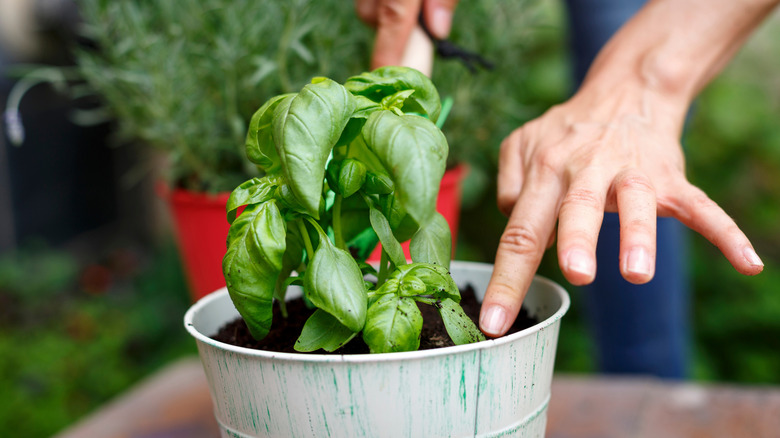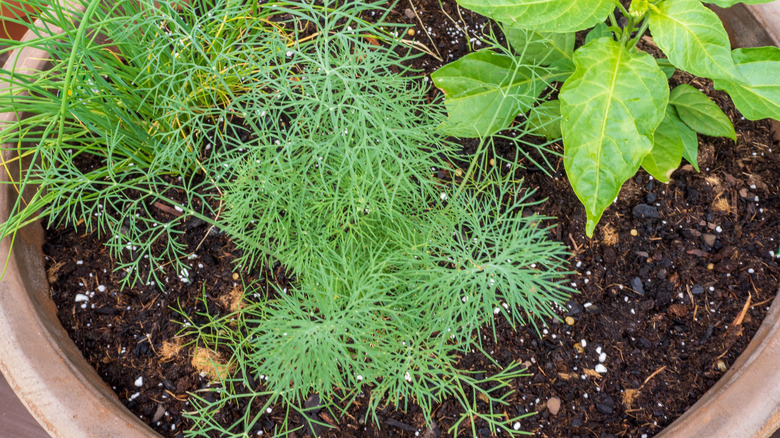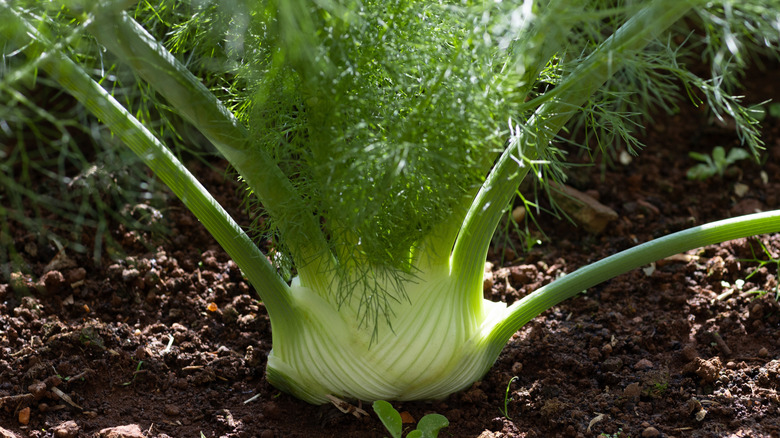Herb Pairs That Make The Perfect Garden Companions
You don't need to have a green thumb or be a pro chef to reap the benefits of growing herbs in your kitchen or garden. Fresh herbs provide a burst of flavor that their dried counterparts just can't quite compete with, and they're good for your health, too. You can save space by growing well-paired herbs together in the same pot or bed, such as dill and chives, basil and oregano, anise and coriander, and sage and rosemary.
This practice is called companion planting. It saves space and time by allowing you to plant multiple herbs in the same space and care for them at the same time. Just as importantly, companion planting can benefit your garden plants through the art of mutual support. The list of ways that plants can boost each other's health just by growing in the same medium is surprisingly vast. For example, some plants help improve soil conditions for other plants. Other plants repel harmful pests or attract helpful ones, which has a positive domino effect on the species grown around them. In some cases, companion plants are simply able to coexist peacefully, with neither plant outcompeting the other for moisture, sunlight, or soil nutrients. The opposite is also true — growing the wrong herbs together can result in poorer plant health, so it's important to choose companion plants wisely.
Herbs that make great companions
One herb that works well as a companion plant for a wide range of others is dill. As long as the other herbs tolerate moist soil, dill is likely a fair contender as a companion. For example, it pairs well with chives, and not just in the kitchen. Dill and chives both repel harmful pests like aphids, while dill attracts beneficial ones like bees, butterflies, and parasitic wasps. Some say that dill can even enhance the flavor of chives when the two are grown together.
On the other end of the spectrum, there's basil. Basil doesn't do well with most herbs, preferring to be planted alongside vegetables instead. However, it has a few options for herbal companions, such as oregano. Both plants can repel pests like mosquitoes and aphids, and both do well when planted near tomatoes (oregano attracts pollinators while basil protects tomatoes from pests). Some also say marjoram can make basil taste sweeter when planted nearby.
Herbs that prefer similar growing conditions often make good companions. Rosemary, for example, requires dry soil and full sun, so it can be happily grown alongside sage, thyme, or lavender. But there are other potential benefits, too; some gardeners notice that sage grows more flowers when grown next to rosemary. Meanwhile, coriander (or cilantro, as the leaves are called) grows well with anise, which has a licorice-like taste. Coriander speeds up the germination of anise seeds, and the reverse may be true as well. Meanwhile, anise will repel aphids and lice and can improve the health of plants growing near it.
Best practices for choosing companion herbs
We've recommended a few companion herb pairs above, but nothing stops you from making your own pairings. That said, there are a few key qualities to look for to ensure that your herbs will benefit each other's health rather than harming it. Look for plants with similar soil and light preferences. Herbs with different root depths can benefit each other, since each plant will get its own zone of soil, moisture, and nutrients. The same goes for plants with different root structures, which may also help aerate the soil for each other. You may also look for plants that can help with insect management or provide shade to other herbs.
On the flip side, avoid pairing herbs that have drastically different watering needs, such as sage or rosemary with dill. Keep herbs that can cross-pollinate away from each other, like cilantro and dill, as well as plants that may compete with each other too much. One herb to avoid growing as a companion plant altogether is fennel, since it can inhibit the growth of other plants.


